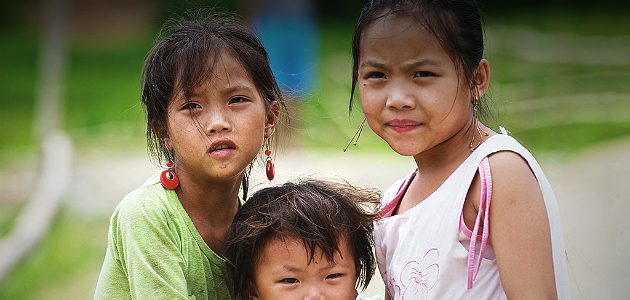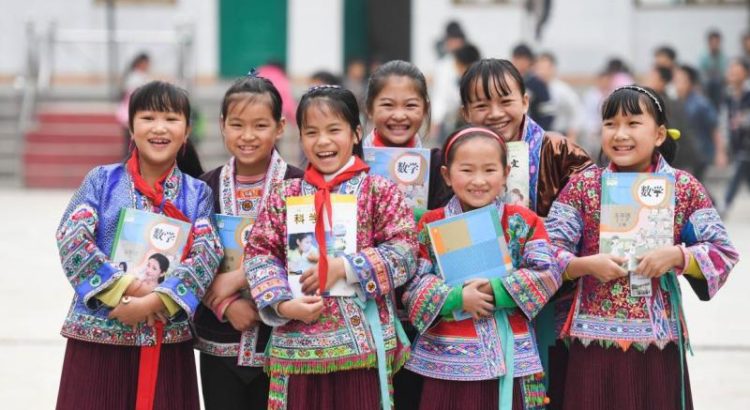As many as 79 percent of agricultural workers in 2004 were still working in the sector in 2008, and that figure rose to 83 percent from 2010-2014, the research found based on national data and surveys taken in 2016, vnexpress.net reported.
Fewer than eight percent of agricultural workers moved to the industry or service sectors during either period.
The “Social mobility and equality of opportunity in Vietnam” study, which is the first to look at people’s perception of social mobility in Vietnam, aims to analyze the trends and factors involved in changing social statuses in society, with a focus on the role of education.
It collected data from the Vietnam Household Living Standards Survey and conducted questionnaires with 600 families and 85 in-depth individual interviews in Lao Cai Province in northern Vietnam, Nghe An in the north central region and Dak Nong in the Central Highlands, which were selected for their diversity of socio-economic development, poverty rate, and commitment/willingness to join the study.
The provinces’ average incomes were VND14 million, VND18.3 million and VND21.7 million ($615-802-950) per person a year, compared to the nationwide average of $2,385 last year.
The rate of children that moved away from their parents’ occupations in the three provinces was low: Only about one-fifth of the children of unskilled/traditional workers were working in different job sectors from their parents, the study found, calling for work to improve the country’s education system.
Educational attainment is the most important factor to fostering social mobility, it said.
The majority of respondents believe that higher education will help their children increase their incomes in the long run as well as increase their opportunities to find stable jobs.
They were right. 41 percent of unskilled workers of a working age with college degrees and 35 percent with upper secondary education moved to skilled labor between 2010-2014, while only 17 percent who did not complete primary education were able to do the same.
Vietnam household data, as cited in the research, shows that 23 percent of households headed by post-high school education graduates moved up from the 40 percent lowest income households to higher income groups in 2010-2014, compared to only eight percent of households headed by primary school graduates.
Each extra year spent in schooling brings an average increase of about five percent in salary and wages, and college-university graduates earn more than twice those who do not finish primary education, according to data from 2014.
But the research found that education opportunities are not equal for everyone in the rural provinces.
Poor and ethnic people find it harder to attain a quality education, it found.
“Great disparity in access to education between the poor and the rich adversely affects the social mobility of the poor,” it said.
“There is a large gap in access to education at high school and college-university levels between the poor and the better-off, between ethnic minorities and Kinh people,” it said.
The proportion of ethnic minority people with the highest level of college-university education was just 0.9 percent in 2004 and 3.1 percent in 2014. For the Kinh, who account for 86 percent of the country’s population, the rate was 5.1 percent in 2004 and 11 percent a decade later.
Vietnam needs ‘breakthrough’ policies to improve access and quality of education for children of poor and ethnic families, and to minimize prejudice and discrimination towards ethnic minorities, Oxfam said.
One important measure to reduce these disparities is to address language barriers for ethnic minority children through the development of a multilingual learning environment, and by increasing the number and quality of local ethnic minority teachers, it said.
Vietnam has recorded significant achievements in poverty reduction. It has lifted nearly 30 million people out of poverty since the 1990s, and raised people’s average annual incomes from $100 in 1990 to more than $2,300 last year.
But inequality in Vietnam increased between 1993 and 2014, Oxfam said.
The Kinh and Hoa (Chinese), the majority groups in Vietnam, earned two times more than ethnic minority groups during 2004-2014. The rate of occupation shifts of children among the Kinh and Hoa was also higher than for ethnic minority groups, the study found.
Inequalities of voice and opportunity are ‘much more worrying’, it said, reflecting the concerns of many of the minority group members it surveyed.
“Schools are a place where ethnic minority children feel inequality clearly,” the research found.
A M’nong parent from Dak Nong, only identified as K, said his sixth-grade child was one of only two ethnic minority students in class and his other child was the only ethnic student in his class at a kindergarten.
K said he had noticed the disadvantages his children face compared to majority ethnic groups, even though teachers and schools do not have overtly discriminatory attitudes.
This disadvantage is clear in social activities organized by the school, such as a camping trip for the older kid in early 2016.
Each student had to contribute VND500,000 ($23), which K said was a lot of money given the fact that his family depends on one hectare of wheat, odd jobs and his wife’s allowance of more than VND 1 million ($45) as a commune official.
He phoned to ask his child’s teacher for a discount of VND300,000, and the teacher agreed, but K. said he felt ashamed.
Source:
http://www.iran-daily.com/News/212860.html?catid=3&title=Limited-education-opportunities-hinder-social-mobility-in-rural-Vietnam













 Users Today : 22
Users Today : 22 Total Users : 35460325
Total Users : 35460325 Views Today : 27
Views Today : 27 Total views : 3419055
Total views : 3419055